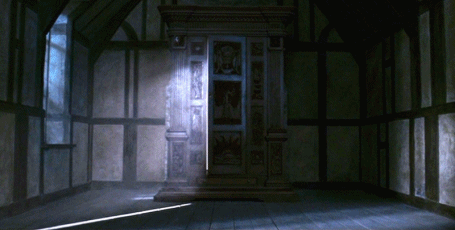What do you think?
Rate this book


206 pages, Paperback
First published October 16, 1950


The Written Review :
If you've ever wondered which literary world would be the best to live in, wonder no longer, cause there's a BookTube Video to answer that!
One day, you will be old enough to start reading fairytales again.It's like C.S. Lewis was speaking to me. I never read these as a child but now that I'm in my mid-twenties, I'm feeling the urge to visit all those childhood classics I never read. And I'm so glad I did.
Peter did not feel very brave; indeed, he felt he was going to be sick. But that made no difference to what he had to do.Four siblings on a rainy day play hide-and-seek. The youngest discovers an incredible secret in the back of the old wardrobe in their uncle's house. After a fair amount of convincing, she and her three siblings set out to explore and are soon whisked into the land of Narnia.

Narnia! It's all in the wardrobe just like I told you!

“Lucy looks into a wardrobe”




- ‘’Nadie puede decir que has robado un abrigo mientras no salga del armario donde lo has encontrado. Y supongo que todo este país está dentro del armario’’.
- ‘’Tal vez te ha sucedido alguna vez al soñar que alguien dice algo que no entiendes pero en el sueño parece como si tuviera un enorme significado; puede ser un sentido aterrador, que convierte todo el sueño en una pesadilla o, por el contrario, uno demasiado magnífico para poder expresarlo con palabras, que convierte el sueño en algo tan hermoso que uno lo recuerda toda la vida y siempre desea repetirlo’’.
- [...] ‘’si existe alguien capaz de presentarse ante Aslan sin que le tiemblen las rodillas, o bien es más valiente que la mayoría o es sencillamente un necio’’.
- ‘’He conocido enanos buenos [...], pero realmente pocos, y son los que se parecen menos a los hombres’’.
- [...] ‘’indicó Aslan a Peter en voz baja; tan baja que sonó casi como un ronroneo, si no resulta irrespetuoso decir que un león ronronea’’.
- [...] ‘’pero si alguien se ha sentido así -si ha permanecido despierto toda la noche y llorando hasta quedarse sin lágrimas- sabrá que al final llega una especie de calma’’.
